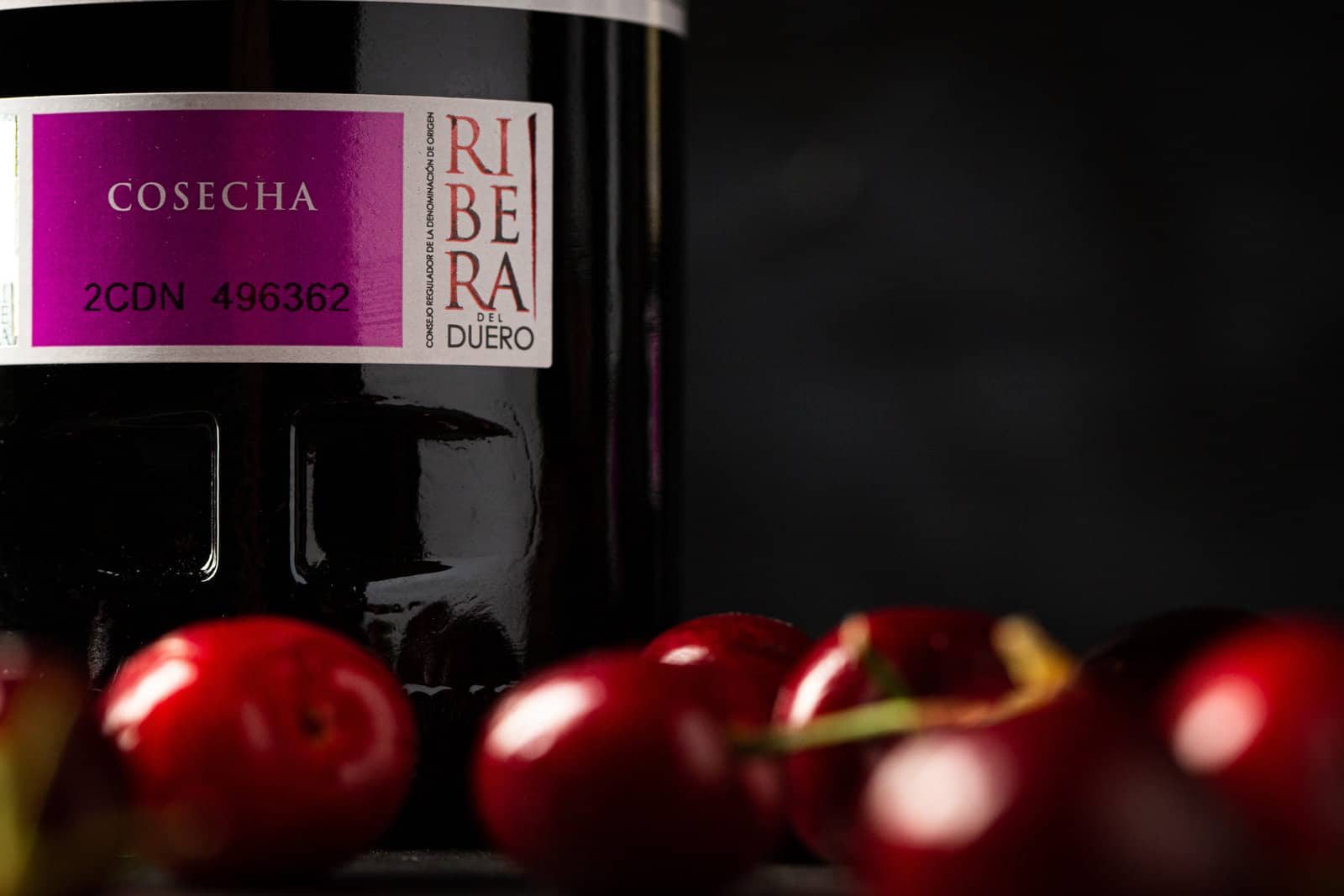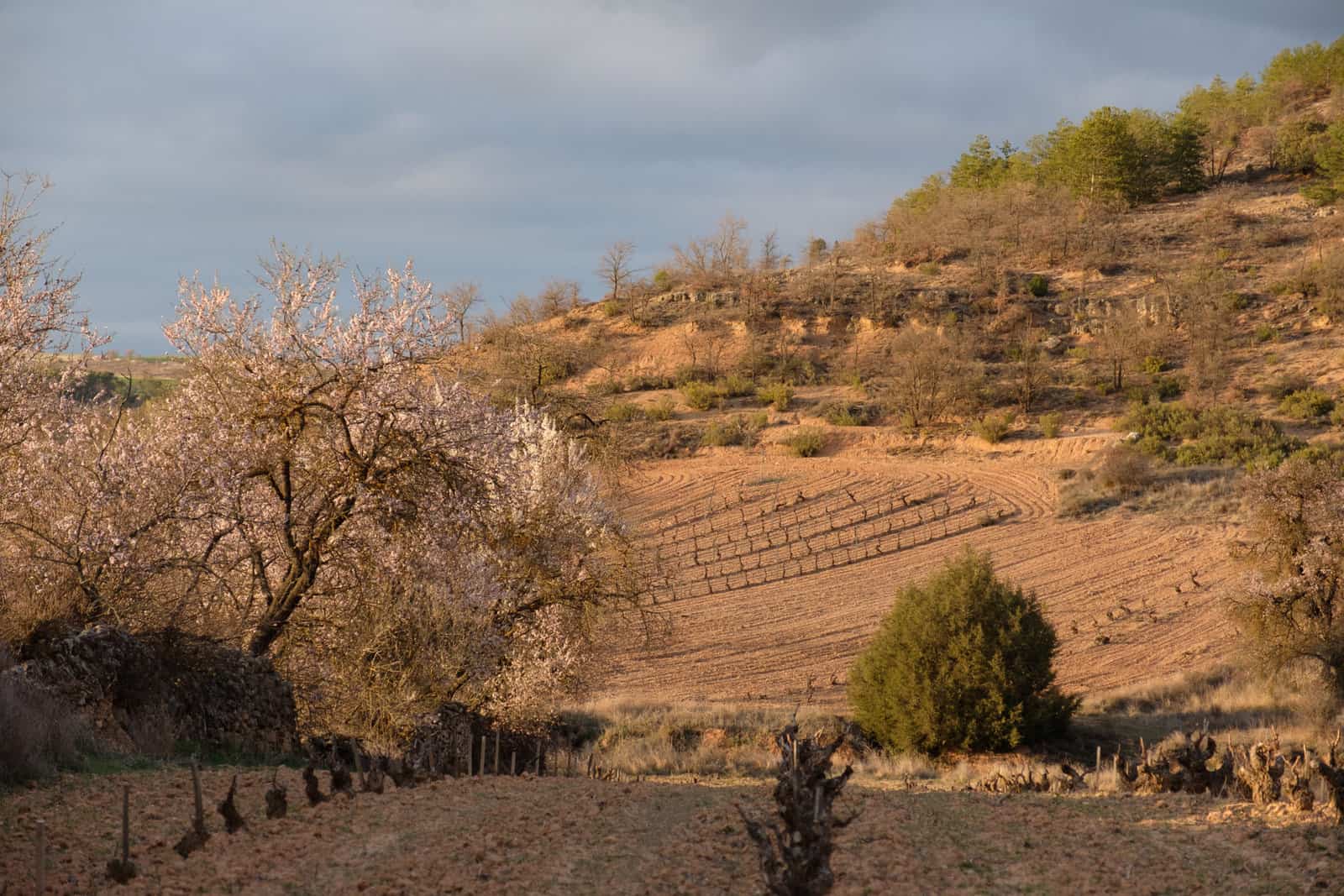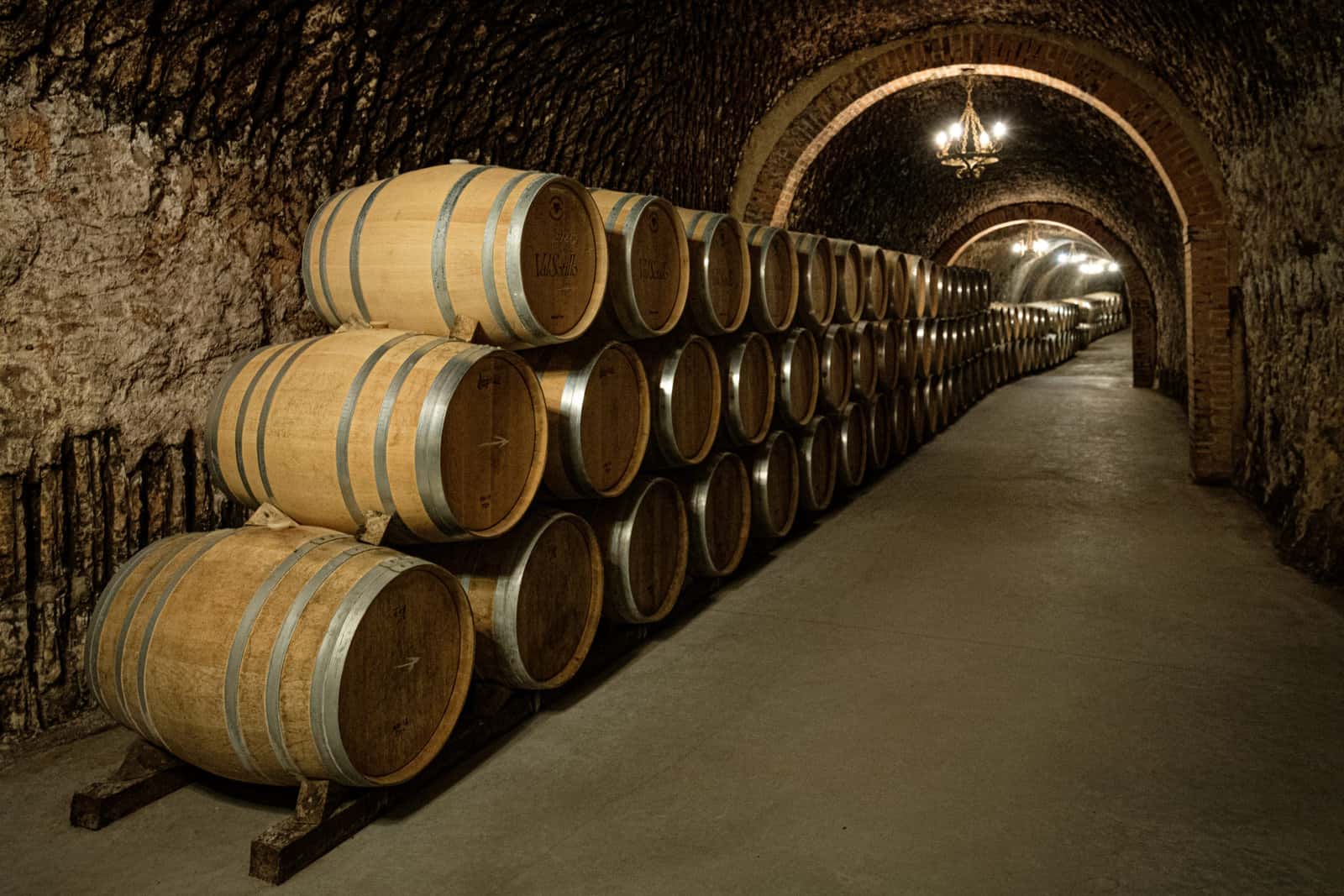
In most places, an axiom like “ten months of winter, two months of hell” would more likely be the snicker of a competitive region than it would a statement by its own. But winemakers in Spain’s Ribera del Duero, located in Castilla y León in the north-central part of the country, are happy to own this description. They know the resulting Tempranillo grape is like none other in Spain because of the unforgiving conditions in which it grows, not in spite of them.
Ribera del Duero, which translates to the riverbanks of the Duero, is mostly a high plateau ranging from 2,200 to 2,800 feet. It is host to as many as 30 different soil types, though mostly sand, limestone, chalk, and sand, all of which contribute to the distinctive nature of the region’s dominant grape, Tempranillo. To a lesser extent, other grapes are grown here too – Cabernet Sauvignon, Merlot, Malbec, Garnacha Tinta and Albillo Mayor, a white grape, chief among them.
Tempranillo grown here is so distinct that it is referred to locally as Tinto Fino and Tinta del Pais in order to distinguish it from other Spanish-grown Tempranillo. The berries from this region are smaller, the skin is thicker, the color is darker, and the acidity runs high. These characteristics result in wines that run the flavor gamut from ripe red fruits to blueberry to plum and cassis; to spice, leather, and tobacco.
The Root(s) of the Matter
The “hell” referred to in the dubious regional description comes from the scorching temperatures that beat down on the land mostly in July and August. But the region is comprised of thousands of acres of old vines – 9 percent of which are as old at least 80 years old – and over the decades, these vines have adapted to the conditions to produce stellar grapes characteristic solely of this region.
The diurnal shift in Ribera del Duero – the swing between the coldest and hottest temperature of the day – can be as much as 40 degrees. This means the vines might wake up to a temperature of a mild 60˚F and before day’s end, soak in a high of 95˚F. This necessitates vine adaptation and so too specialized winegrowing considerations – vine canopies, vineyard planting and orientation (most are on north- or south-facing hillsides), pruning, thinning, and harvesting. These methods combined with the growing and climatic conditions in Ribera del Duero translate to lower yields than in other tempranillo-growing regions, but the concentration of flavor in each grape more than makes up for the lesser quantity. Indeed, each grape, each glass that comes from the vineyard, tells a story of struggle and victory all in one sip.


Sustaining a Region
Sometimes a challenge can turn into a benefit, and in the case of Ribera del Duero, that benefit is long-standing sustainable growing methods. Those methods may not have been guided by a philosophy as much as they were necessity. 80 percent of the grapes are harvested by hand, in part a nod to tradition and in part because of the winegrowers’ intense focus on selecting only grapes that fit their strict criteria. It’s about quality over quantity.
What’s in a Label?
The Ribera del Duero received official Denominación de Origen status in 1982 when the region had just nine wineries. Nearly 30 years later, about 300 wineries call this area home. More doesn’t necessarily translate to better quality, but the Ribera del Duero DO does. So too does the back label on every bottle of the DO wine. This label not only indicates the official Ribera del Duero appellation but it’s also the window into the age and aging methods used to make the wine.
In Ribera del Duero it goes like this:
Crianza: Aged a minimum of two years, one year in oak. Reserva: Aged a minimum of three years, at least one year in oak and the remaining time in bottle. Gran Reserva: Aged a minimum of five years, at least two years in oak and the remaining time in bottle. Cosecha: This is a bit of a catch-all and can mean everything from the youngest wine to the longest-aged, most sophisticated wine as long as it comes from the Ribera del Duero and meets the minimum standards set by the appellation.
Tempranillo gets top billing in the wines from two of Spain’s most prestigious bodegas.
No discussion of Ribera del Duero is complete without the mention of the region’s and indeed Spain’s arguably most famous wineries. Begun in the mid-19th century, Vega Sicilia got its start making a version of a Bordeaux blend. Over time, however, the grape that elevated Vega Sicilia wine to superstar status was the addition of Tempranillo. Today, in fact. the winery’s most famous wine – Vega Sicilia Unico – is comprised of about 95 percent Tempranillo and the remainder Cabernet. Shortly thereafter, Pingus joined the ranks of the world’s most coveted wines and is well-known and revered wherever great wine is discussed. Pingus is the result of Peter Sisseck’s commitment to showcasing his very old-vine Tinto Fino (Tempranillo) vineyard. These winemakers not only helped elevate Ribera de Duero to world-class status, but they also elevated the status of the Tempranillo grape itself. If the people making one of Spain’s most sought-after wines are growing and bottling Tempranillo, then surely it is a grape worth cultivating by others. Consider it done.
A challenge and a pleasure
It’s hard not to wonder why winemakers would work so hard to bring wine drinkers a wine that unquestionably grows with fewer challenges elsewhere. One taste of Tempranillo answers that. Holding up a glass, one sees deep color and detects aromas that are the essence of the climate, soil, and topography in which the grapes grow. Because of the challenges inherent in growing Tempranillo, it is clear this remarkable grape has gotten to the glass because of persistence and hard work. Then comes a sip, when the only thing left to say is a quiet “gracias.”




